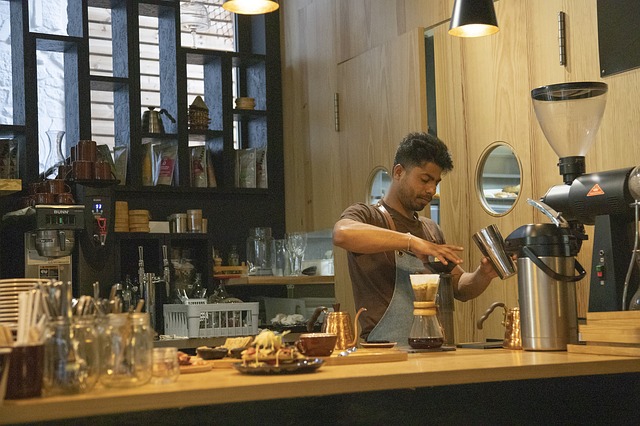Corporate cafeterias (CCs) serve as a way of keeping employees fed without leaving the workplace. Meals can be paid for by the company, its employees or a hybrid of both. CCs can also cover the hunger of employees working for multiple companies within the same building. In short, they are similar to a school cafeteria. CCs provide a tangible, in-house perk to employees. When it comes to running them, it seems best to hire a management company.

What Does A Corporate Cafeteria Management Company Do?
They manage every aspect of the cafeteria food service and some will also cover the initial set up of a CC if you currently lack one.
Ordering Food
These vendors are connected to national distributors, meaning they can negotiate for discounts. Discounted prices means savings, less markup on costs and more profits.
Menu Planning
This is done based on available ingredients for the day, meaning the menu changes wildly day to day and is one of the few negatives here. Because of national discounts, chefs have the same ingredients every day.
Food Prep
The head chef oversees preparation of the daily meals. Obviously, being able to leave preparation to another company is another benefit, one that ensures employees eat fresh food daily.
Serving
This may be handled through serving stations, self-checkout or even grab-and-go boxed lunches.
Janitorial Work
Once the meal rush is done, cafeteria employees clean up the area and dispose of food.
How These Earn
Beyond the obvious management or contract fees, you might consider subsidizing. Limited subsidies would involve a set payment each month or year with an excess costs coming from the management company. Full subsidies would have you paying for everything and the management company has little need to cut overhead. Whatever the arrangement, meal costs go to the management company. Since each vendor offers a custom quote for your cafeteria, management fees can rack up.
The Problems With Corporate Cafeterias
1. Menu Fatigue
The menu gets repetitive, with the same ingredients coming from profit-minded distributors. Every chef is a specialist who will favor that specialty in his kitchen. You may not see the same things every week, but repetition and boredom should set in within a month.

2. Not Meeting Consumer Demands
Employees want authentic cultural experiences from chefs familiar with those cultures. There is also a growing push for locally-sourced ingredients from local businesses. These issues just do not suit a traditional business cafeteria. While some firms are experimenting with solutions, there have been many hiccups.
3. Less Participation
A disused is just a waste of money and employees do not really use CCs that much. This leading to price hikes or cost-cutting, both only furthering diminished use. Things can hit a point where running a cafeteria becomes detrimental to earnings.
How To Evolve Cafeterias
There are ways a food service cafeteria can improve its appeal to your employees.
1. More Variety
- Partner with local eateries and caterers who use local ingredients, basically serving as a popup restaurant.
- Rotate chefs, prioritize broad menus and collaborate with local providers for seasonal eating.
2. Emphasize Authenticity
Business cafeterias offer convenience based on the costs, this means chefs get to decide what to make. Authenticity goes beyond the food itself and extends to things like interactions between your employees and the cafeteria’s. A profit-focused model means that the latter group could consist of individuals more concerned with a paycheck than passion. Focusing or profit is also why some places resort to self-checkout.

You can gain authenticity by collaborating with local restaurants. Give your employees opportunities to meet local food service workers, including the owners and head chefs who are passionate about their work.
The Uphill Battle
Popups can basically stand in for a management company without prohibitive cost. Cafeteria services struggle because they exist through a different profit model that interacts poorly in business partnerships.
